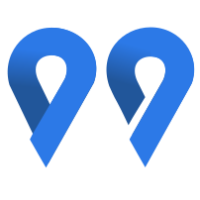 Maps, Locations and Territories for Jira - product overview
Maps, Locations and Territories for Jira - product overview
- 1 Product Summary
- 2 Features Walkthrough
Product Summary
Maps, Locations and Territories enables geospatial support in Jira that goes far beyond adding markers to issues. It facilitates comprehensive fieldwork management, allowing you to add locations to individual issues, define territories and their supporting users, and enable systemic management of location-based work at scale with on-map visibility and territorial-based assignments and workflows.
Maps, Locations and Territories will boost efficiency in an array of use cases, which include, but are not limited to:
field service management - manage and dispatch field technicians more efficiently
logistics and supply chain - track pickups and deliveries
real estate - track properties, tenants, and maintenance requests
facilities management - track maintenance requests and equipment
event planning - track event locations, vendors and logistics
health care - track patient locations, medical equipement and supplies
The product’s core functions include:
Adding addresses and map markers to issues
Adding locations in portal requests created by end-users (Supported by Maps, Locations and Territories for Service Desks)
Defining territories and assigning users to them
Identifying users who can support an issue in its location by the assigned territory
Searching for issues by address text
Locating issues on the map by JQL query or search filter
Managing your pending work and pulling new work items based on predefined ordering strategies.
Product editions and positioning
Due to Jira platform specifics, the product offering consists of two distinct editions:
 Maps, Locations and Territories for Service Desks
| The edition for Service Desks includes Service Management Portal integration, where users can add request locations through the portal. This release of the app can be only installed in Jira Service Management instances. |
 Maps, Locations and Territories Core
| The Core edition supports all product functions except locations in portal requests (which are a feature of Jira Service Management). The app is intended for use with Jira Work Management and Jira Software. Use this edition if your Jira instance does not support Jira Service Management or you are fully confident that you do not intend to enable users to add locations in their portal requests. |
Features Walkthrough
Add locations to issues
The foundational function of the app is the ability to add locations to Jira issues. To have locations in your Jira issues it is required to configure the Location custom field for the respective screens and issue types. This is done differently depending on whether you are managing a company- or team-managed project.
Configuring Location custom field for company-managed projects
The below steps require the product admin role for Jira Administration.
Configuring Location custom field for team-managed projects
Add locations in portal requests
This feature is exclusive to Maps, Locations and Territories for Service Desks.
Due to Jira's specifics, locations in service desk requests are currently only supported in company-managed service projects.

With Locations & Territories for Service Desks, you can augment your Service Desk portal users' experience by enabling your customers to add locations to the raised requests. You must first enable locations in portal requests for the respective request types within your service desk projects.
These steps require the product admin role for Jira Administration.
Discover who can support an issue at its location


With Maps, Locations and Territories, you can easily streamline the assignment of issues based on their locations. Once you define territories in the system and assign users to them, you can easily see who can support issues at their locations.
These steps require product admin role for Jira Administration.
Search for issues by address text
With Maps, Locations and Territories you can find your issues by location with ease.
When searching issues via Basic or advanced search, use the “Location” field to search issues by Location. You can use the ~ operator in JQL, e.g.:
Location ~ ScrantonLocate issues on the map
Maps, Locations and Territories comes with a workbench which allows you to search for issues with the use JQL or existing filters, and display your search results on the map.
Define a pull system for issues to streamline the workloads of your users
Maps, Locations and Territories come with a pull system workflow which can boost your organization’s performance: avoid cherry-picking issues by users and the burden of manual assignments by managers; streamline issue handling through criteria you define and the territorial support provided by individual users.

Benefits of a pull system
Users of the pull system are not concerned with inspecting project backlogs, boards or shared queues of issues to pick issues for work. Instead, they use a single button to let the pull-system pick the next most relevant task which is within the territory supported by the user and focus on their personal backlog of issues. The order in which issues are fetched and assigned to users is determined by the core configuration of the work management through the following concepts:
work queues defined as search filters and the users subscribed to them
queue routing strategy that determines which queue is picked by users to pick the next tasks.
Configure and use the pull system
These steps require product admin role for Jira Administration.
Automation & Integration
The location custom field has the following JSON structure:
{
"fields": {
"Location": {
"lat": << EPSG:3857 latitude >>,
"lng": << EPSG:3857 longitude >>,
"morton": << Morton code of coordinates, calculated by the app, optional" >>
"address": "<<address line appearing in the text field">>"",
"addressAux": "<< manually entered auxiliary address information, optional >>"
"mode": "<<controls how address field is updated on pin change in UI, auto|manual>>"
}
}
} When cloning the Issue through Automation, please the JSON structure field by field, i.e.:
{
"fields":{
"Location":{
"lat": {{triggerIssue.Location.lat}},
"lng": {{triggerIssue.Location.lng}},
"morton": {{triggerIssue.Location.morton}},
"address": "{{triggerIssue.Location.address}}",
"addressAux": "{{triggerIssue.Location.addressAux}}",
"mode": "{{triggerIssue.Location.mode}}"
}
}
}